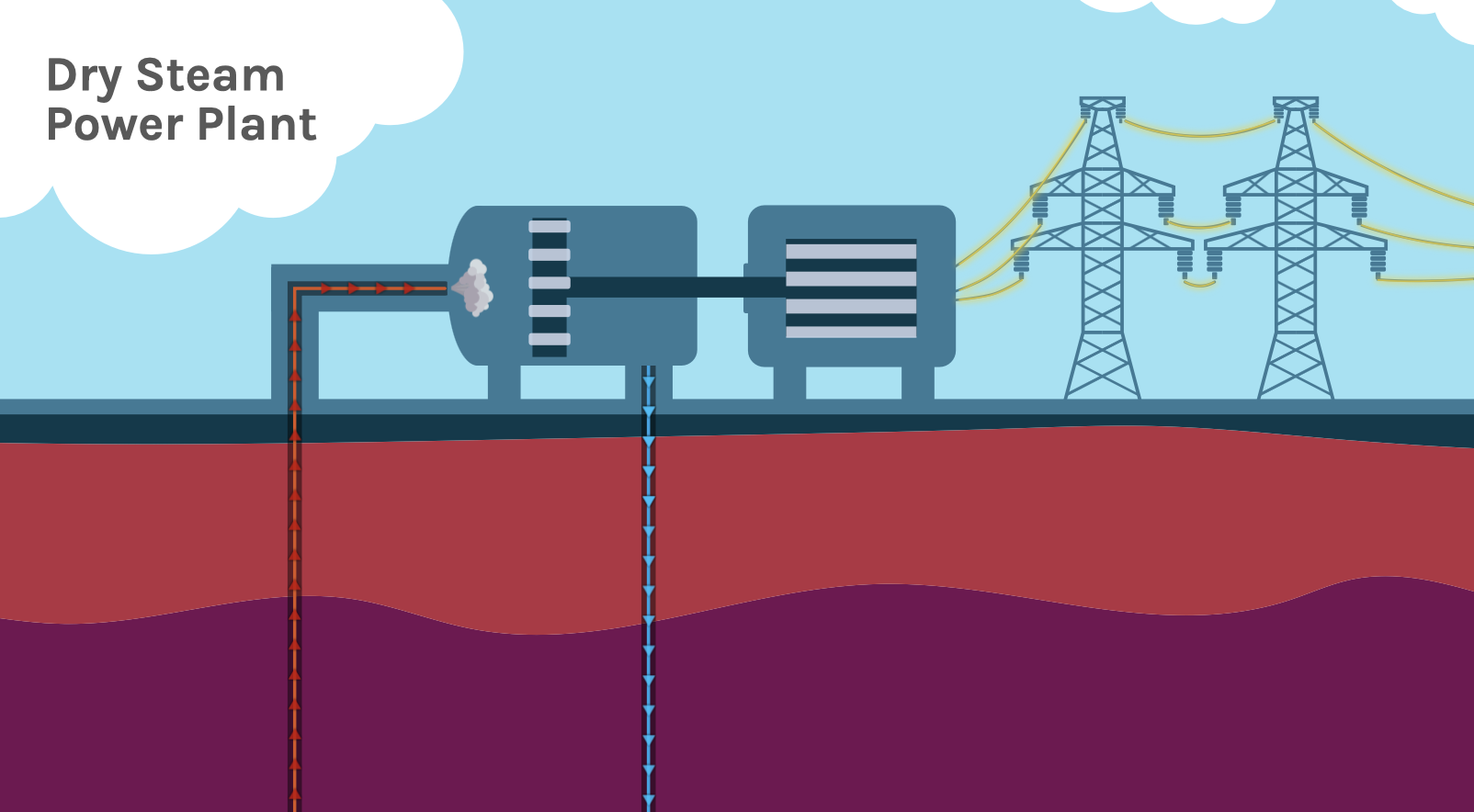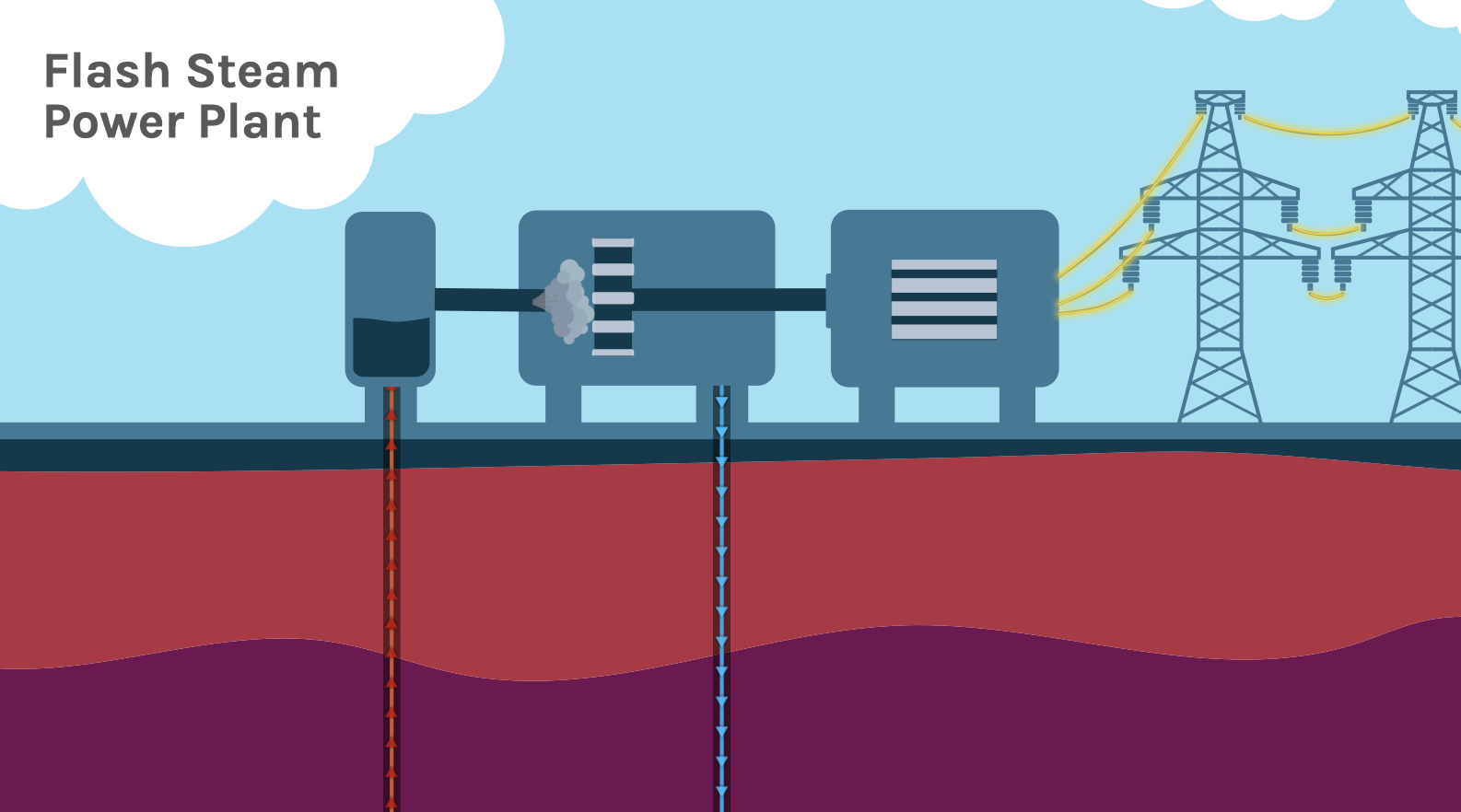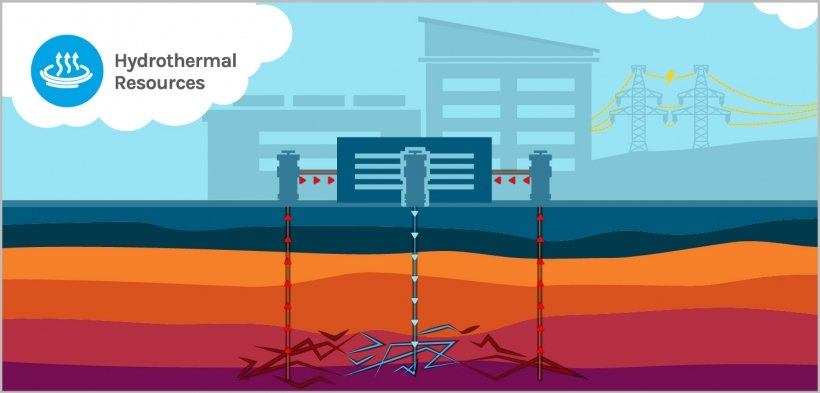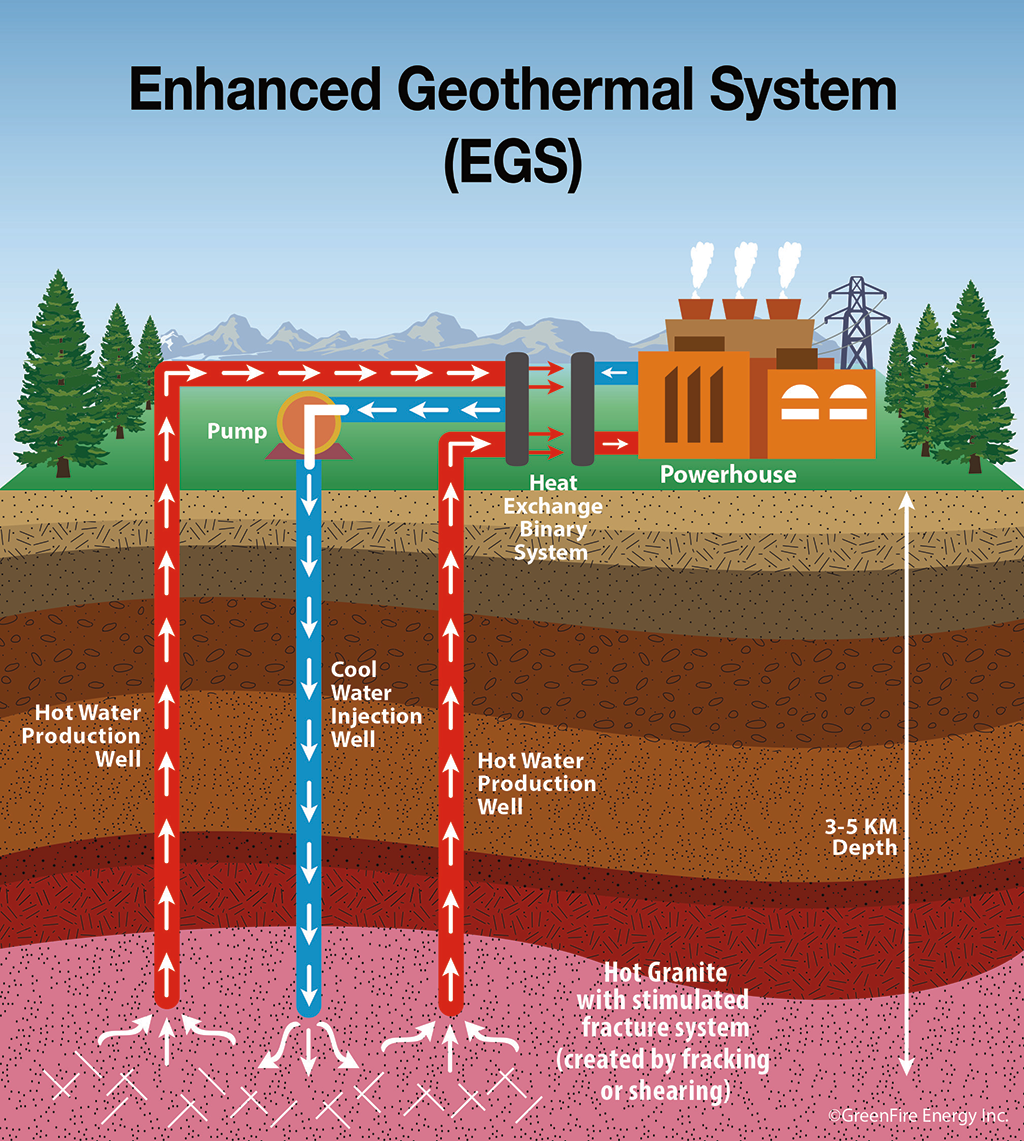Geothermal Electricity
Listed below are the three most common types of Geothermal Electricity generation. The most common type of generation found in Colorado is Binary systems. This is because Colorado has an abundance of low-temperature geothermal resources.
How is geothermal electricity generated?
- Binary Steam
Binary systems are different from the other two method because this runs on lower temperature water, around 225-360 degrees Fahrenheit. These plants use the heat from the hot water to boil a working fluid usually an organic compound with a low boiling point. The fluid is vaporized in a heat exchanger and used to turn a turbine. Any leftover water is then injected back into the ground.

Source: U.S. Department of Energy, Geothermal Technologies Office
- Dry Steam
Dry steam plants draw their power from underground and use wells to direct the steam to a generator unit.

Source: U.S. Department of Energy, Geothermal Technologies Office
- Flash Steam
Flash Steam are more common and use geothermal reservoirs of waters with temperatures greater than 360 degrees Fahrenheit. The hot water used flows through wells in the ground under its own pressure. Then the steam only is used to power a generator and the leftover water or steam are injected back into the reservoir.

Source: U.S. Department of Energy, Geothermal Technologies Office
The technologies you should know about
- Hydrothermal
Hydrothermal Resource: A conventional geothermal resource (Underground system of hot water and/or steam) that can be tapped for electricity generation using existing technologies.

Source: U.S. Department of Energy, Geothermal Technologies Office
- Enhanced Geothermal Systems (EGS)
Human-made underground geothermal reservoirs that extract geothermal energy from the Earth for electricity generation and/or heating applications. EGS reservoirs are created by drilling wells and injecting water to stimulate the rocks and create permeability.

Source: Green Fire Energy
- Advanced Geothermal Systems (AGS)
An AGS system uses one or more wells drilled into hot rock with fluid circulating through a closed-loop system to bring heat to the surface for direct heating and electricity applications.
- Geothermal Energy Storage
Geothermal energy storage is a transformative technology that can transfer heat energy from underground water to electricity, which can then be stored like a battery. This innovative approach can be used with any of the technologies listed above and allows a geothermal site to fully utilize the energy given by the geothermal resources, making it a sustainable and efficient energy solution.